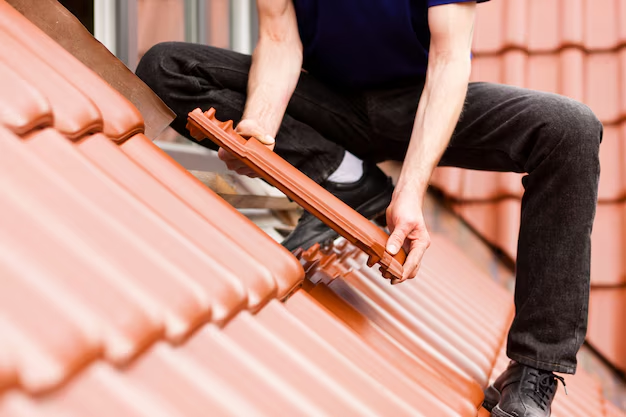Understanding Roof Flashing: A Guide to Keeping Your Home Dry
Few homeowners spend much time thinking about their roof, especially when it's working as it should. However, as a critical aspect of any roofing system, roof flashing plays a vital role in safeguarding your home from water damage. So, what exactly is flashing on the roof, and why is it so important?
What Is Roof Flashing?
Roof flashing is a thin material, often made of galvanized steel, aluminum, or copper, designed to direct water away from key areas of your roof. These areas include the valleys, joints, and openings, such as chimneys, skylights, and vent pipes. By guiding water off of these potentially vulnerable points, flashing helps prevent leaks and maintains the structural integrity of your home.
How Does Flashing Work?
Water can quickly find its way into even the smallest cracks, leading to severe damage over time. Flashing acts as a protective seal that stops water infiltration where different surfaces meet. It essentially "flashes" water away from critical zones on your roof, ensuring it drains correctly into the gutters.
- Chimney Flashing: Often installed in multiple pieces around your chimney, it prevents gaps where water could seep through.
- Valley Flashing: Used in roof valleys (where two roof slopes meet), directing water down and off the roof.
- Drip Edge: Installed along the roof's edge, it encourages water to drip off directly rather than seeping under the roofing material.
The installation process for flashing varies depending on the material and the specific requirements of the roof's design, ensuring a snug, weather-resistant fit.
Why Is Flashing So Important?
Flashing is integral in preventing moisture-related issues that can affect everything from your attic insulation to your interior walls. Ignoring flashing maintenance can lead to problems such as mold, mildew, and structural decay, not to mention costly repairs down the line. Regular inspection and timely repair or replacement of flashing are essential in prolonging your roof's lifespan.
When Should You Inspect Flashing?
Regular roof inspections can either confirm your flashing is holding strong or uncover potential problems before they escalate. Consider checking your roof’s flashing twice a year, preferably during the spring and fall. Also, inspect it after any severe weather events, such as heavy rains or snowstorms.
Transitioning to Financial Solutions
Maintaining your home can sometimes feel financially overwhelming, particularly when unexpected repairs arise. It's no surprise that many people look for financial assistance to manage these unforeseen expenses effectively.
Exploring Financial Assistance Options
For those in need of financial relief, there are multiple avenues available, depending on your personal circumstances:
- Government Aid Programs: Federal and local levels offer aid designed to help with home repairs and maintenance.
- Financial Assistance for Homeowners: Depending on income and area, you might qualify for grants or no-interest loans aimed at essential repairs.
- Debt Relief Options: For those battling debt, consolidating loans or seeking assistance through non-profit organizations may ease financial pressure.
- Credit Card Solutions: Consider cards with home improvement perks or lower interest rates as a temporary relief option.
Addressing your home’s maintenance needs alongside your financial health ensures durability for both your house and your fiscal situation.
Tools and Programs to Explore:
- 🏠 HUD Home Repair Assistance: Check for federal programs that offer financial help for repairs.
- 💳 Low-Interest Home Improvement Loans: Investigate financial institutions offering lower rates for essential roof repairs.
- 📚 Local Non-profits: Many communities have organizations dedicated to home improvements for those in need.
- 🏦 Home Equity Loans: Use your home’s equity to secure funds with favorable terms.
Being proactive about both your roofing’s health and your financial strategy can lead to more secure living. Consider these options, maintain regular inspections, and keep leaks at bay for a safe home environment.
